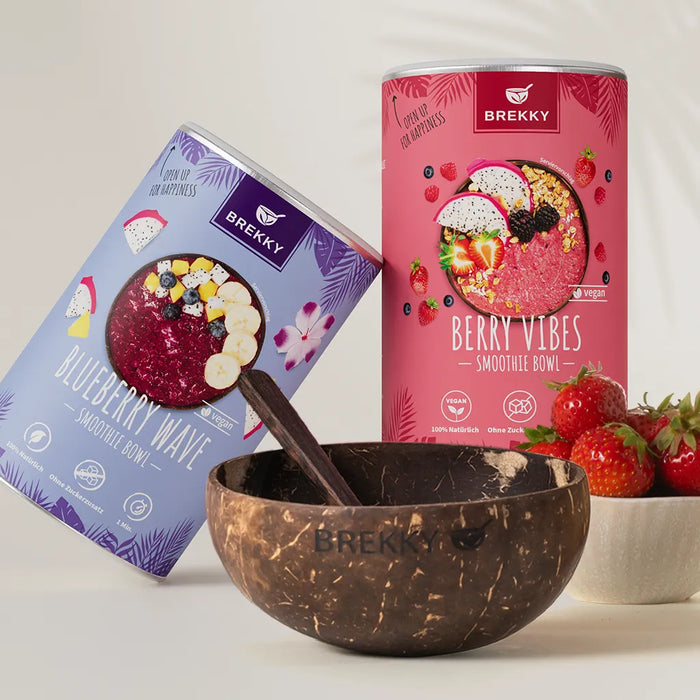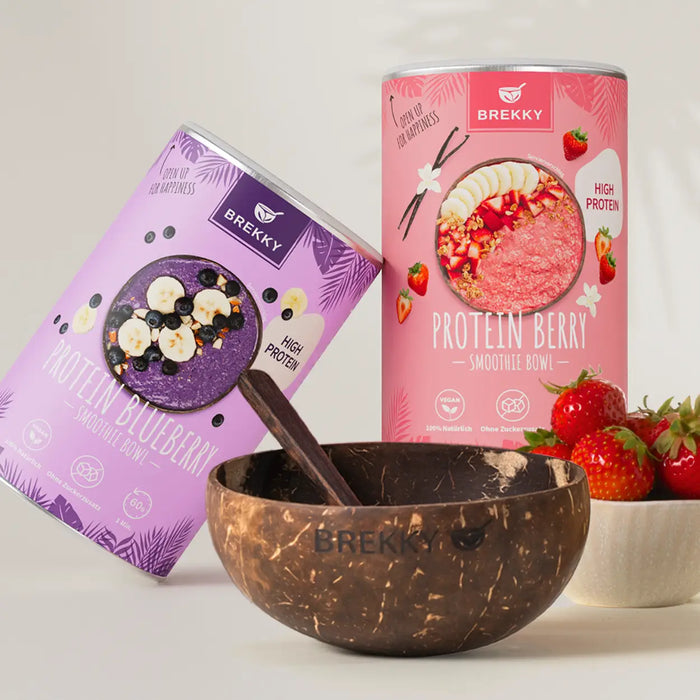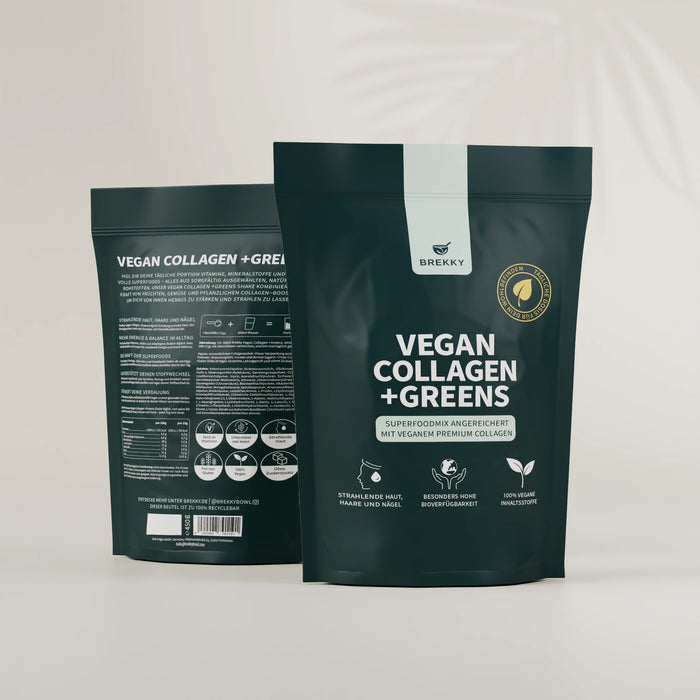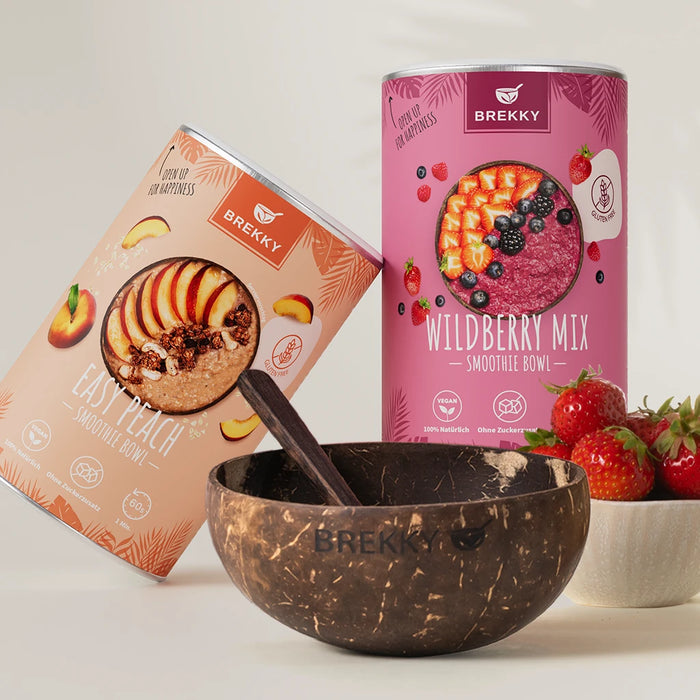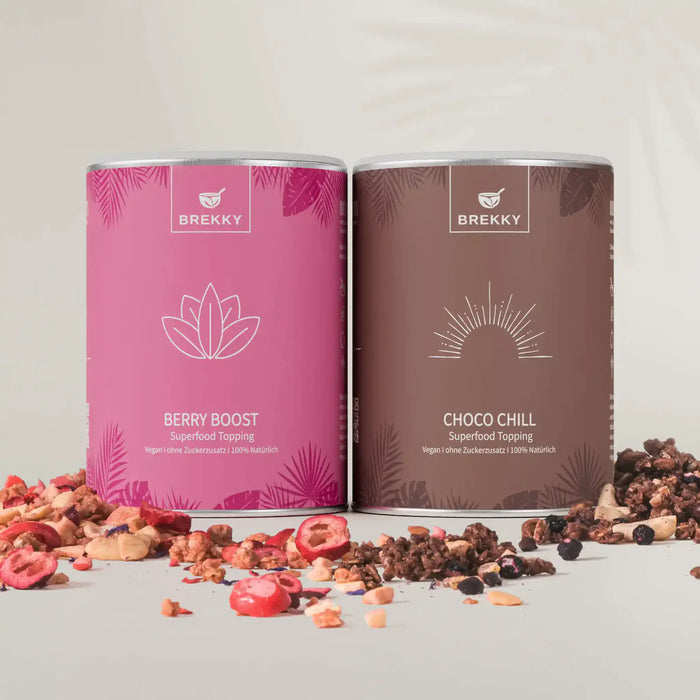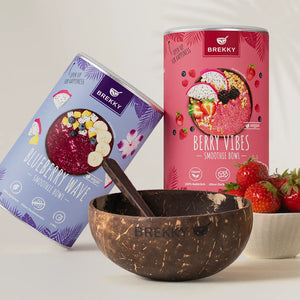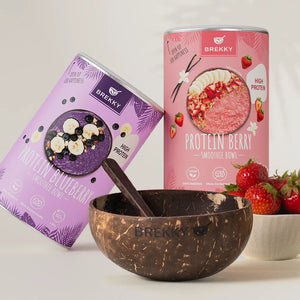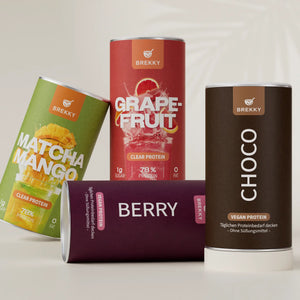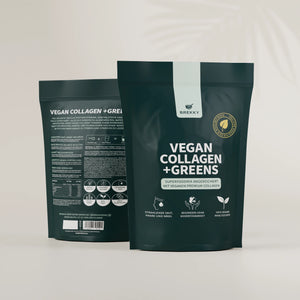Low-carb breakfast briefly explained
Inhalt
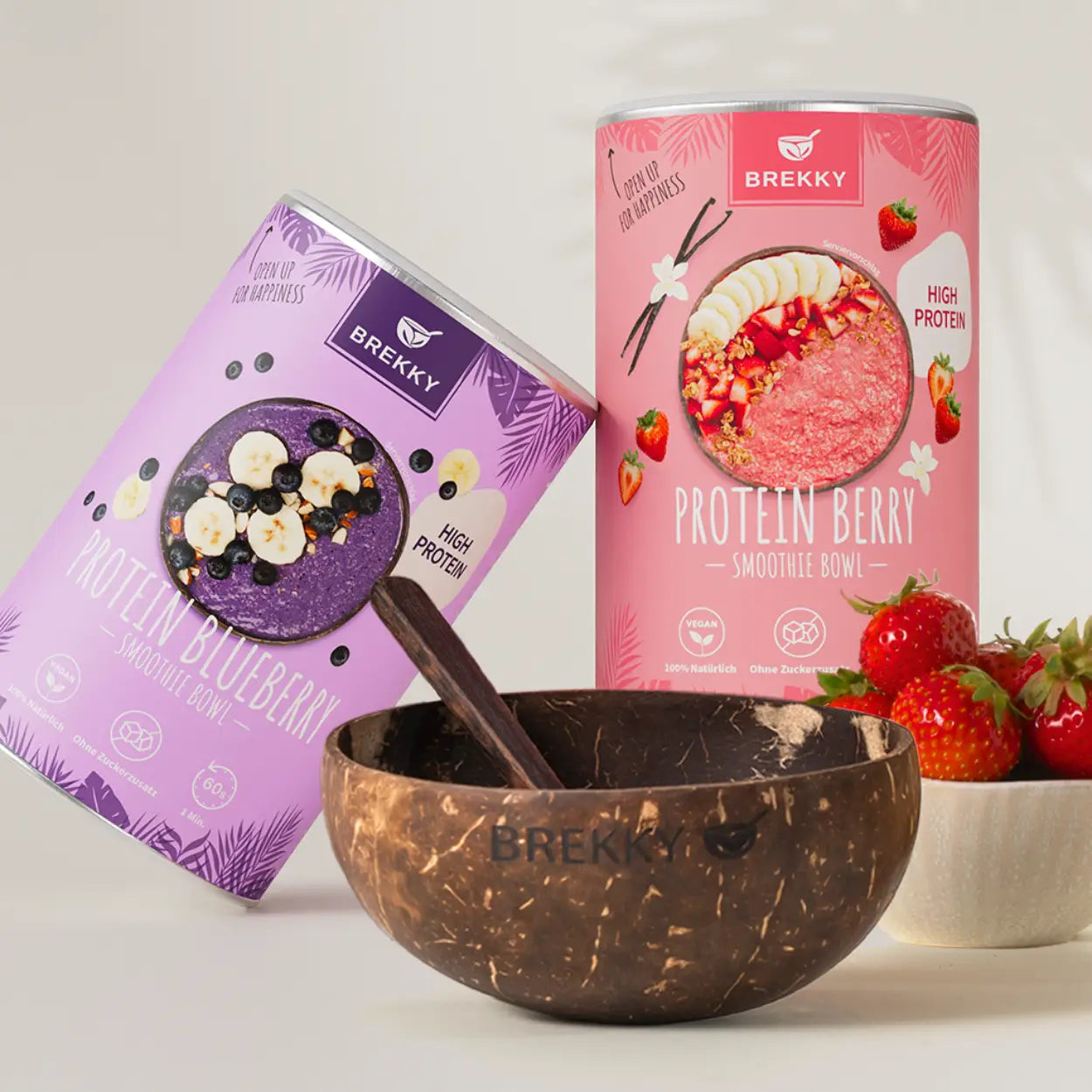
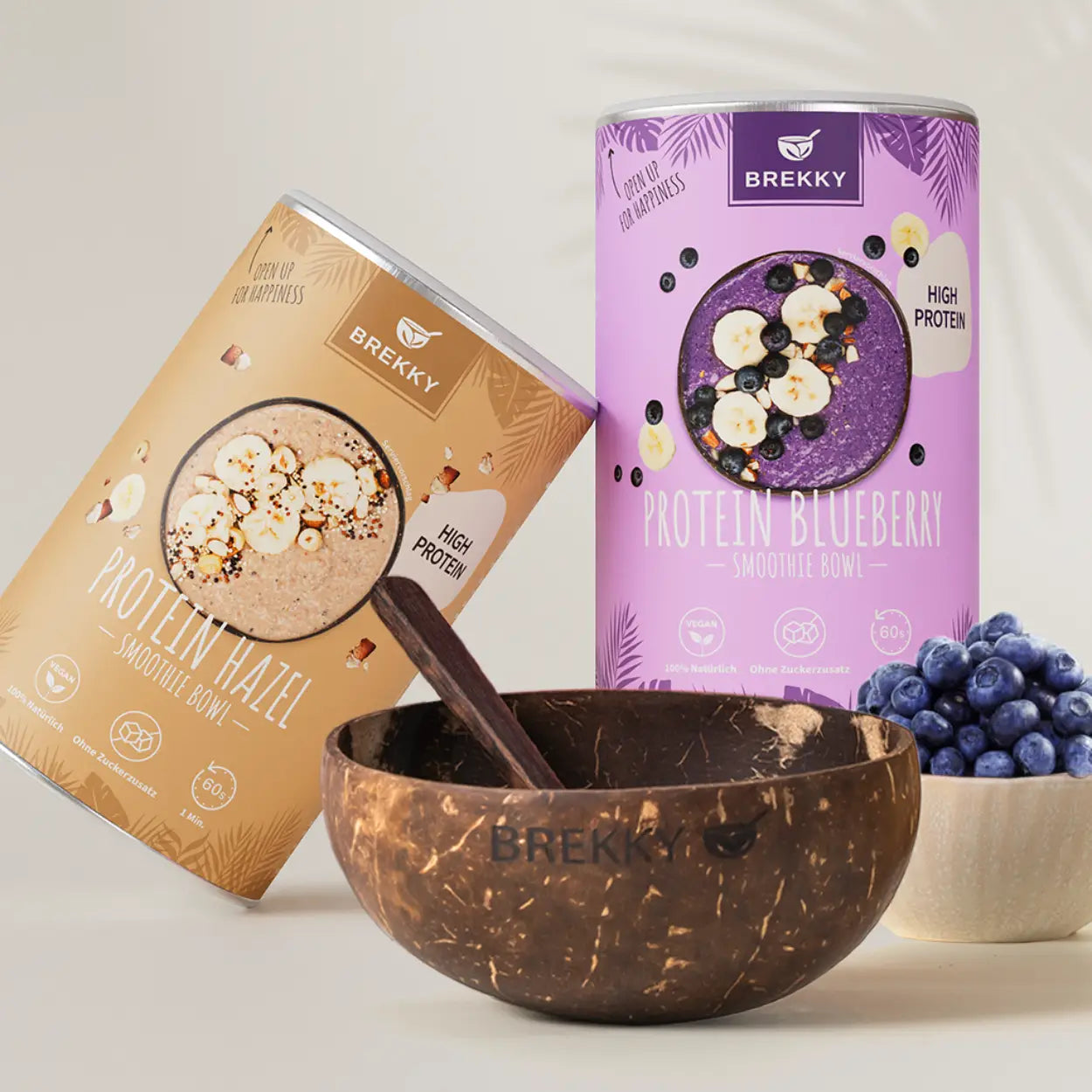
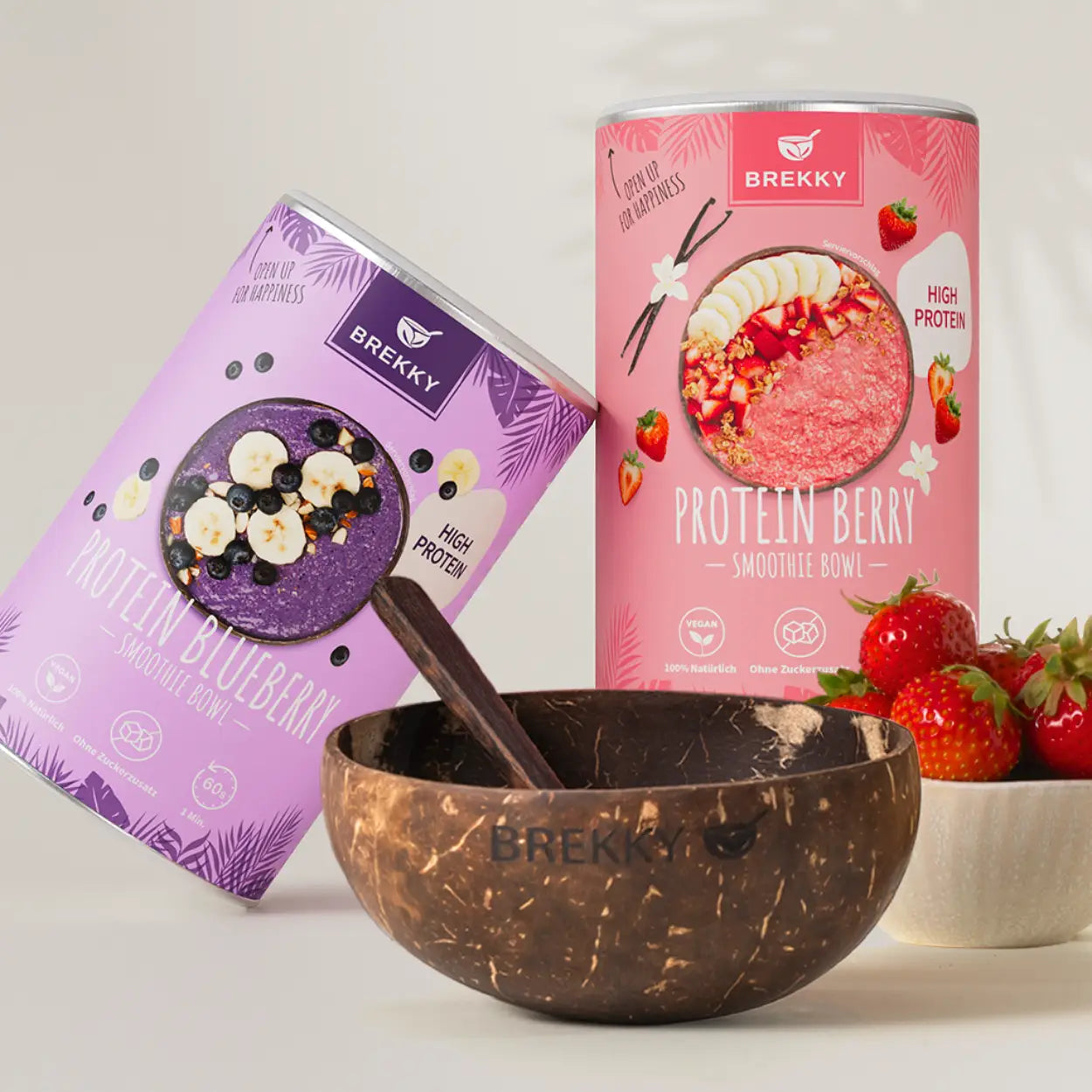
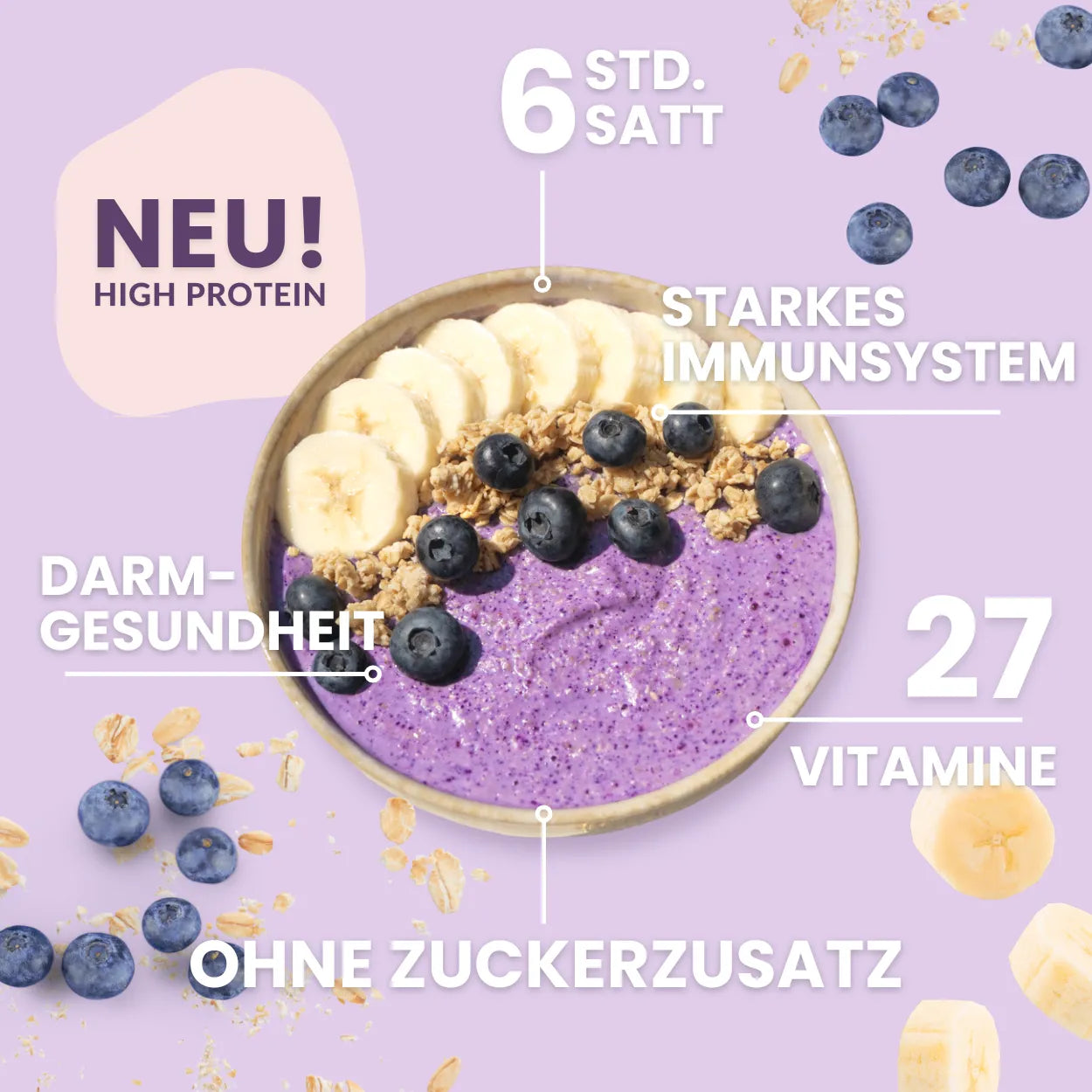
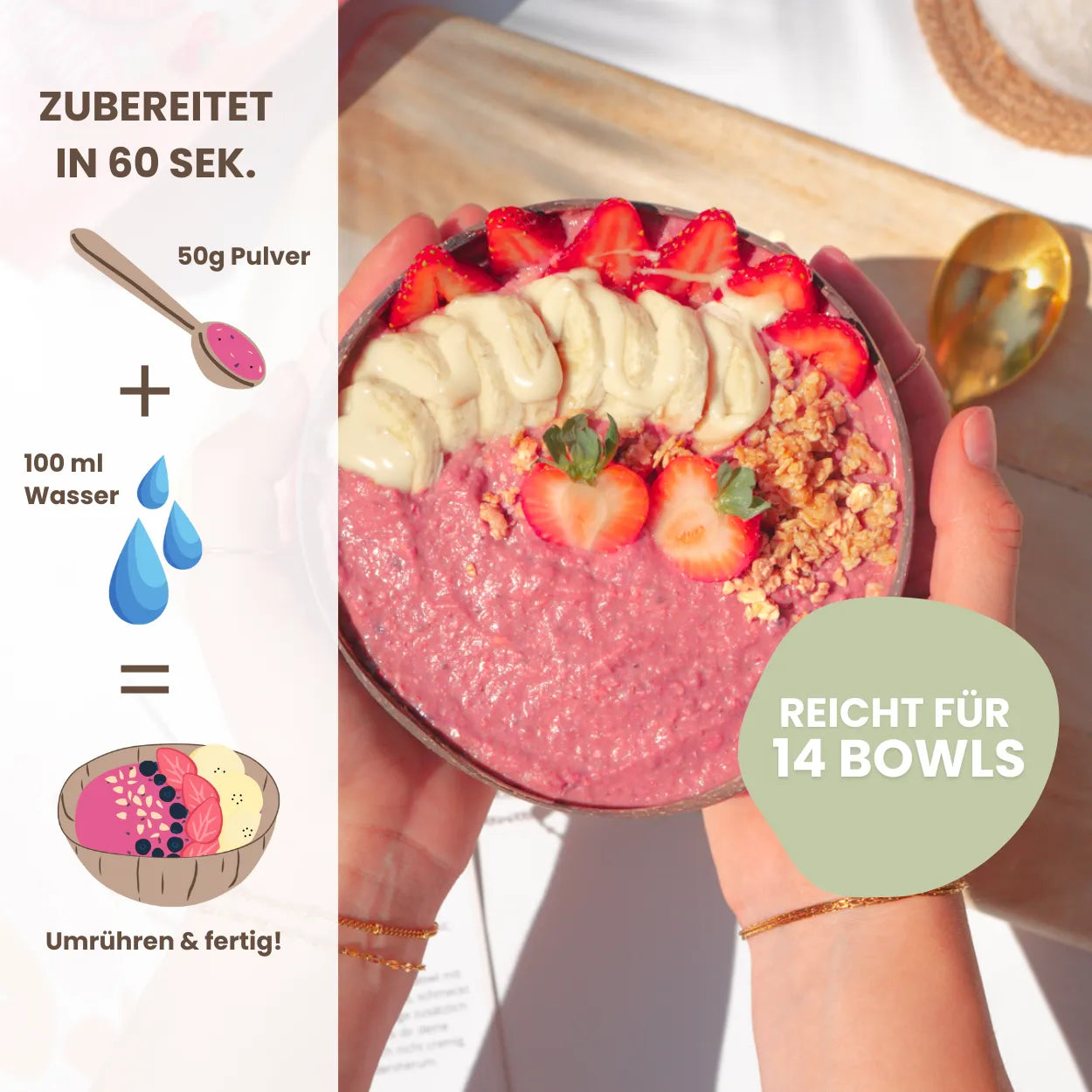
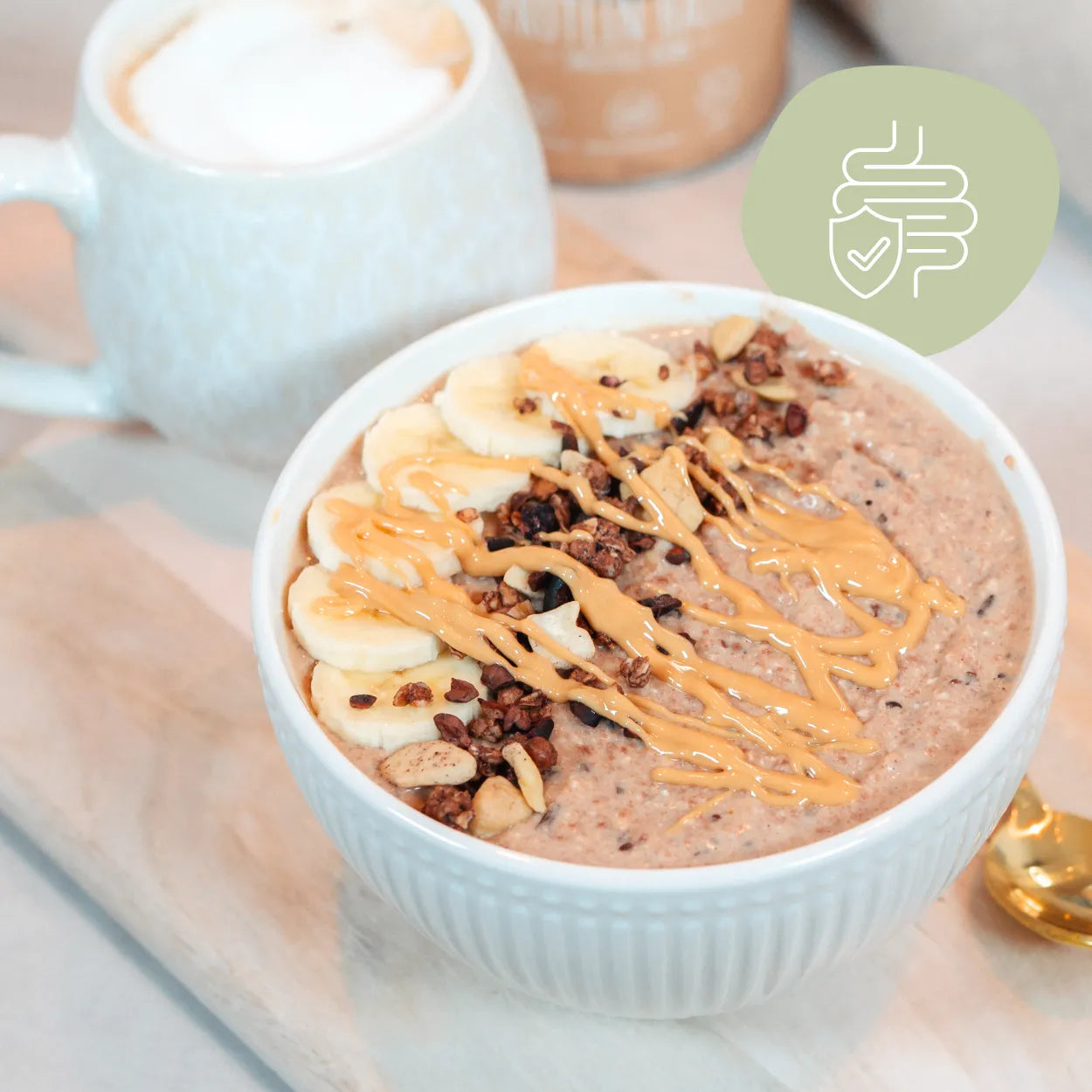

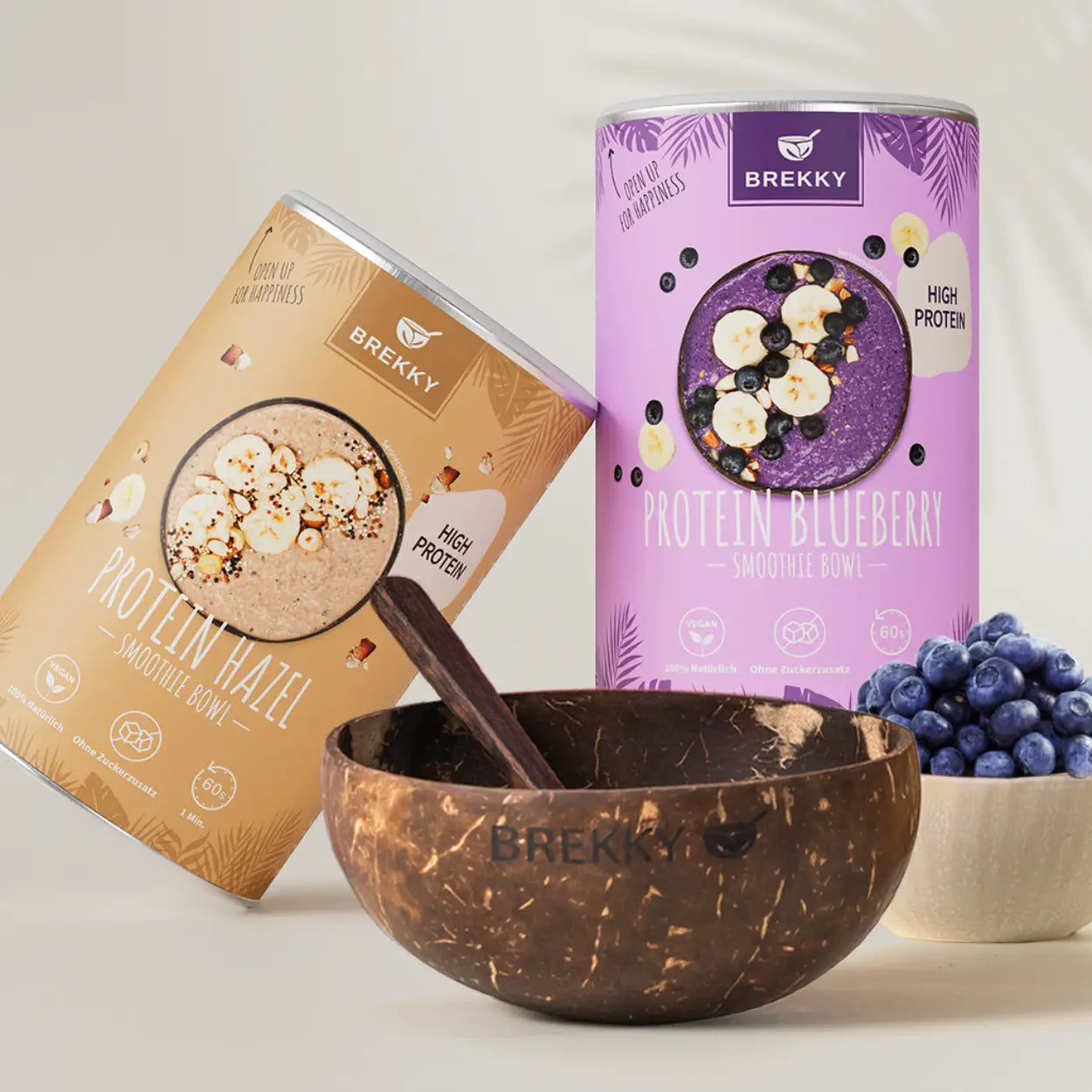
Why is low carb becoming more and more popular?
Low-carb breakfast for weight loss
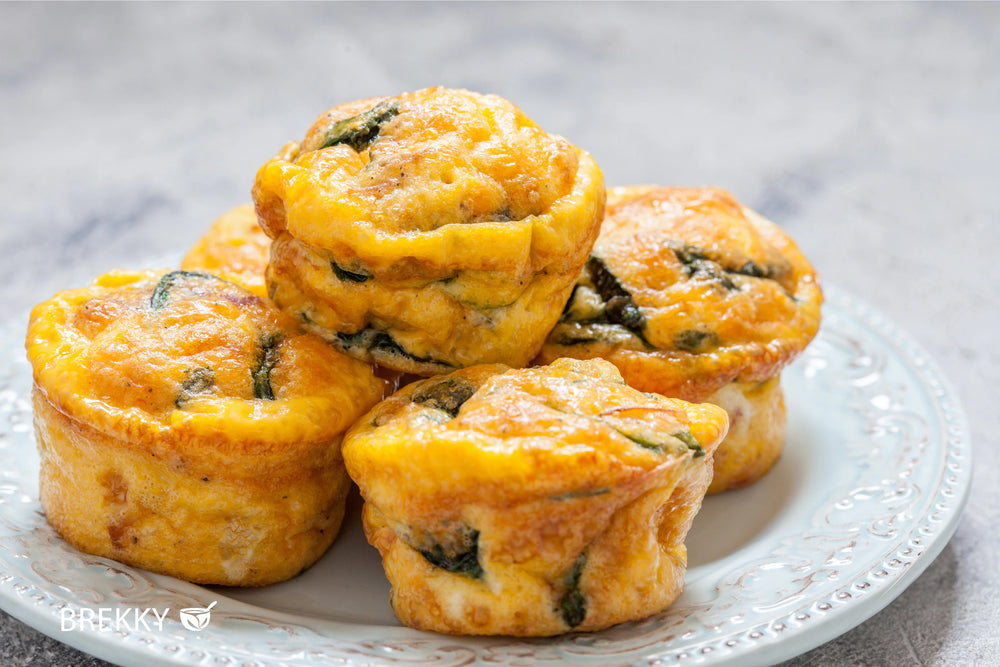
Example of a low-carb breakfast for weight loss
- Egg muffins with spinach and cheese: Served with some cherry tomatoes and a small portion of cottage cheese.
- Yogurt-quark mixture with berries and a few almond flakes.
Both are low in carbohydrates, high in protein, and are perfect for taking away or enjoying at home.
Quick low-carb breakfast recipes
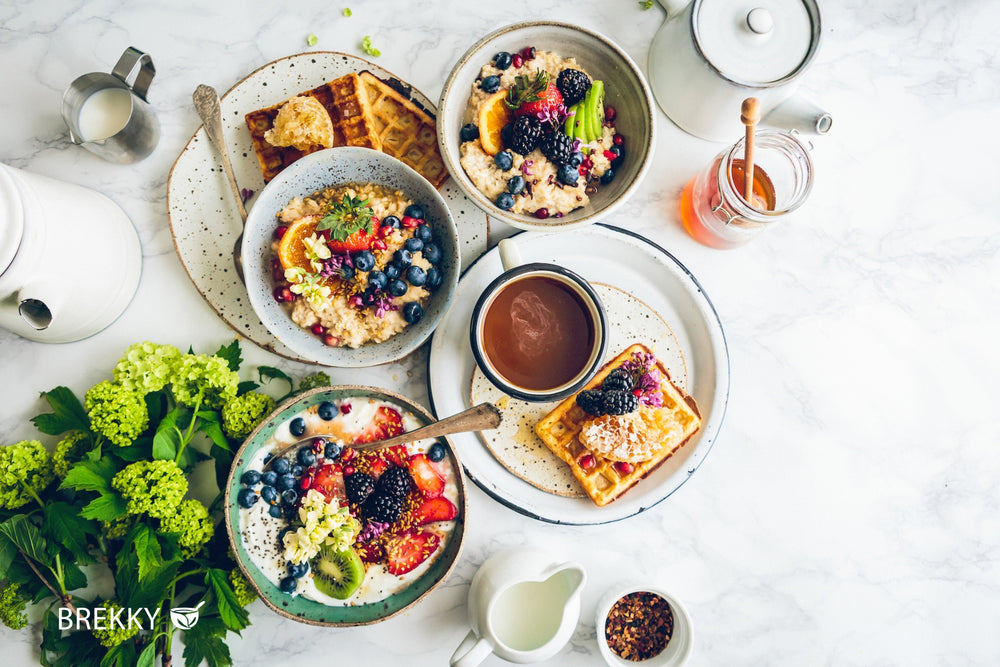
Quick ideas for a low-carb breakfast
- Overnight Oats – Low Carb Style :
Classic overnight oats consist mainly of oats, but you can reduce the carbohydrate content by mixing them with seeds and nuts. Alternatively, you can partially replace the oats with coconut flour or ground almonds. Then let them soak overnight in a mixture of yogurt and water. In the morning, top with fresh berries for a quick breakfast. - Breakfast smoothie :
Blend low-fat quark (or Greek yogurt), unsweetened almond milk, frozen berries, and, if desired, a teaspoon of nut butter. This way, you have a protein source that's completely free of industrial additives. - Scrambled eggs in a glass :
You can make scrambled eggs in the morning, or you can prepare an egg mix the night before and store it in a sealable jar. In the morning, simply fry them in a pan or even heat them briefly in the microwave. You can refine the scrambled eggs with herbs or a little cheese. - Low-carb bread :
For many people, bread is a staple for breakfast, but traditional wheat bread contains relatively high levels of carbohydrates. Those who don't want to do without it completely can opt for high-protein, low-carb bread. Such low-carb breads usually consist of seeds and proteins (e.g., soy or lupin flour). Homemade bread is also incredibly easy, and you know what's in it.
Low-carb breakfast with yogurt and quark
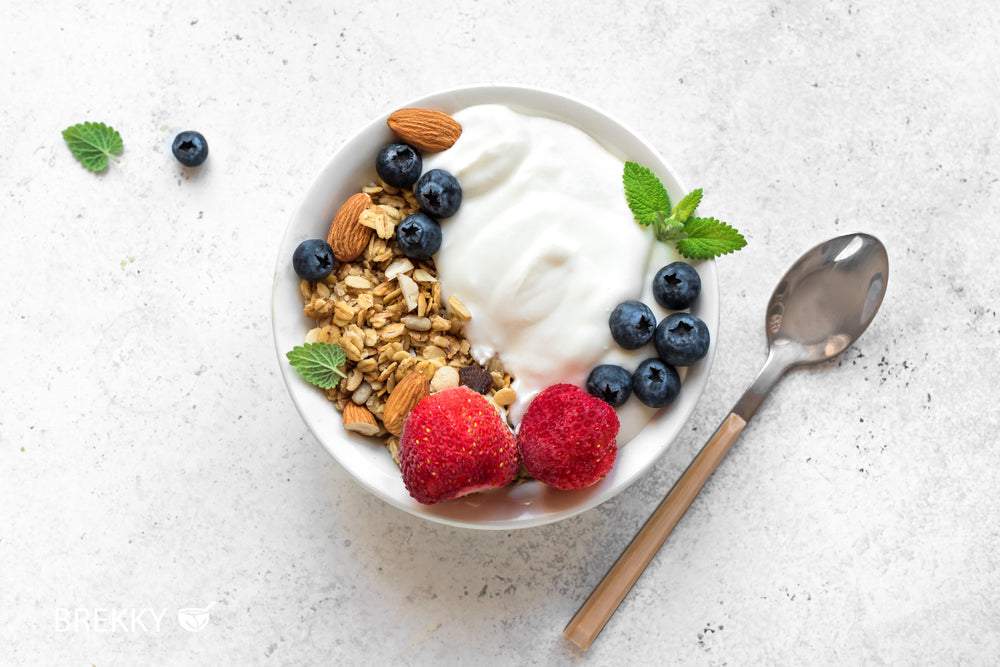
Benefits of yogurt and quark in a low-carb context
- High protein content : Low-fat curd cheese is particularly rich in protein, with approximately 12–14 g of protein per 100 g. Yogurt—especially Greek yogurt—also provides substantial amounts.
- Good satiety : Protein and, depending on the fat content, healthy fats create a long-lasting feeling of satiety.
- Calcium supplier : Dairy products supply the body with calcium, which in turn is important for bones and teeth.
- Versatile flavors : You can serve yogurt or quark sweetly with berries or cinnamon, or combine it savory with herbs and fresh vegetables.
Concrete ideas for a low-carb breakfast with yogurt
- Berry Dream : Mix Greek yogurt (or a yogurt and quark mix) with a handful of blueberries, some flaxseed, and chopped almonds. If you like it sweeter, you can use a low-calorie sweetener (e.g., erythritol) or simply add more berries.
- Yogurt bowl with cinnamon and apple pieces : While apples contain carbohydrates, they're perfectly acceptable in moderation even on a low-carb diet, especially if the other ingredients are low in carbohydrates. Apple cubes in a yogurt bowl add crisp freshness and fiber. A pinch of cinnamon intensifies the flavor and, according to studies, can have a positive effect on blood sugar levels.
- Quark and Herb Dip : Combine low-fat quark with fresh herbs such as parsley, chives, basil, or dill, add a squeeze of lemon juice, and season with salt and pepper. Serve with a slice of bell pepper or sliced cucumber. For a richer flavor, add a little olive oil.
Quark variations for variety
- Red Berry Quark : Blend low-fat quark with frozen raspberries or currants, adding a little water or unsweetened almond milk if desired. The result is a kind of "fruit ice cream" without much sugar.
- Savory Quark Spread : Combine quark with chopped olives, sun-dried tomatoes, oregano, and a bit of feta (or cream cheese). It has a rich flavor and is perfect as a spread for low-carb bread or simply for dipping vegetable sticks.
Tip: When buying yogurt and quark, pay attention to the sugar content. Natural products without added fruit are often a better choice, as many fruit yogurts contain added sugar.
A low-carb breakfast with yogurt or a low-carb breakfast with quark is quick, easy, and nutritious. Thanks to the many variations, it's guaranteed to never get boring.
Low-carb breakfast warm and hearty
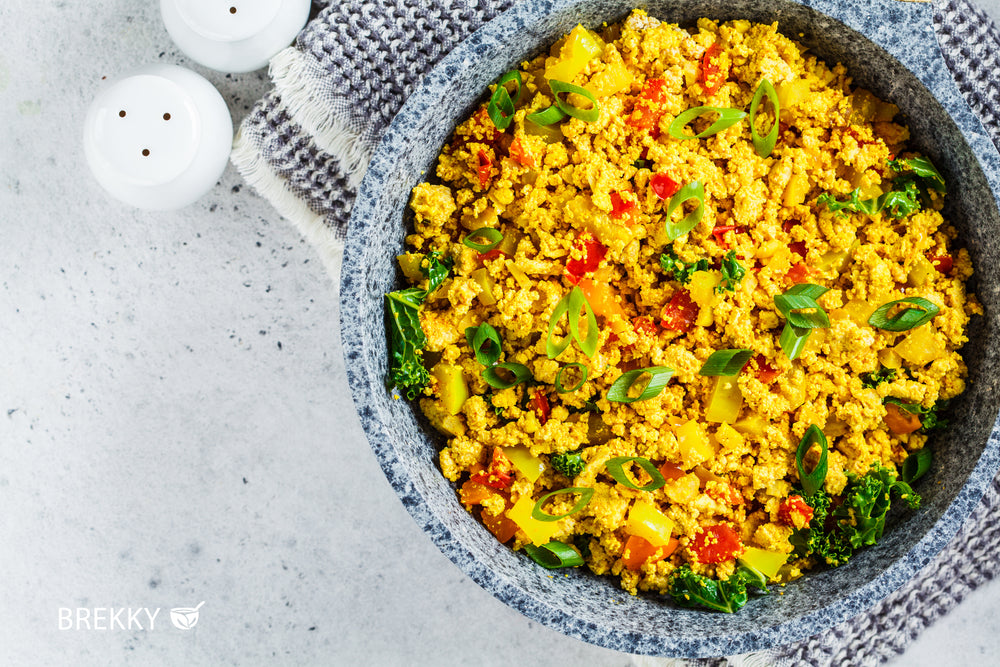
Classics: Egg dishes in all variations
- Scrambled eggs: Combine eggs with butter or coconut oil in a pan, add finely chopped spring onions, fresh herbs, or cheese. This quickly adds a lot of flavor and protein.
- Fried eggs: Whether fried in a pan or served on low-carb bread, fried eggs are quick and easy to prepare.
- Omelette: Very versatile. You can fill it with mushrooms, spinach, peppers, ham, salmon, or cheese. Different fillings add variety to your menu.
Savory dishes from the oven
- Vegetable Casserole: A breakfast casserole with broccoli, cauliflower, zucchini, or peppers, plus an egg-milk (or egg-cream) mixture, provides plenty of micronutrients and protein. Simply season, top with cheese, and bake.
- Egg muffins : Perfect for making ahead. Combine eggs with chopped vegetables, cheese, and herbs, fill muffin tins, and bake. Remove from the oven, let cool, and store in a Tupperware container. The perfect snack for breakfast or on the go.
Warm low-carb pans
- Vegetable stir-fry with chicken : If you have plenty of time in the morning or prefer a hearty breakfast, fry pieces of chicken breast with onions and vegetables in a pan. A splash of soy sauce or a hint of chili will add some flavor.
- Protein Pancakes : Using eggs and a small amount of coconut or almond flour, you can easily whip up a pancake batter. Sweet versions are popular with cinnamon and berries, but you can make them savory with cheese and herbs.
Spicy extras
- Avocado : Whether as guacamole or simply sliced with salt, pepper, and lemon, avocados contain a lot of unsaturated fatty acids and are perfect with egg dishes or warm vegetable dishes.
- Low-carb rolls : There are now numerous recipes based on quark, eggs, flaxseed flour, or almond flour that deliver a delicious roll experience when baked. So you don't have to miss out on that "roll feeling."
So, if you prefer a warm meal in the morning, you don't have to make any major compromises. A warm low-carb breakfast provides variety and, thanks to its protein and fat profile, delivers a balanced basis for the day.



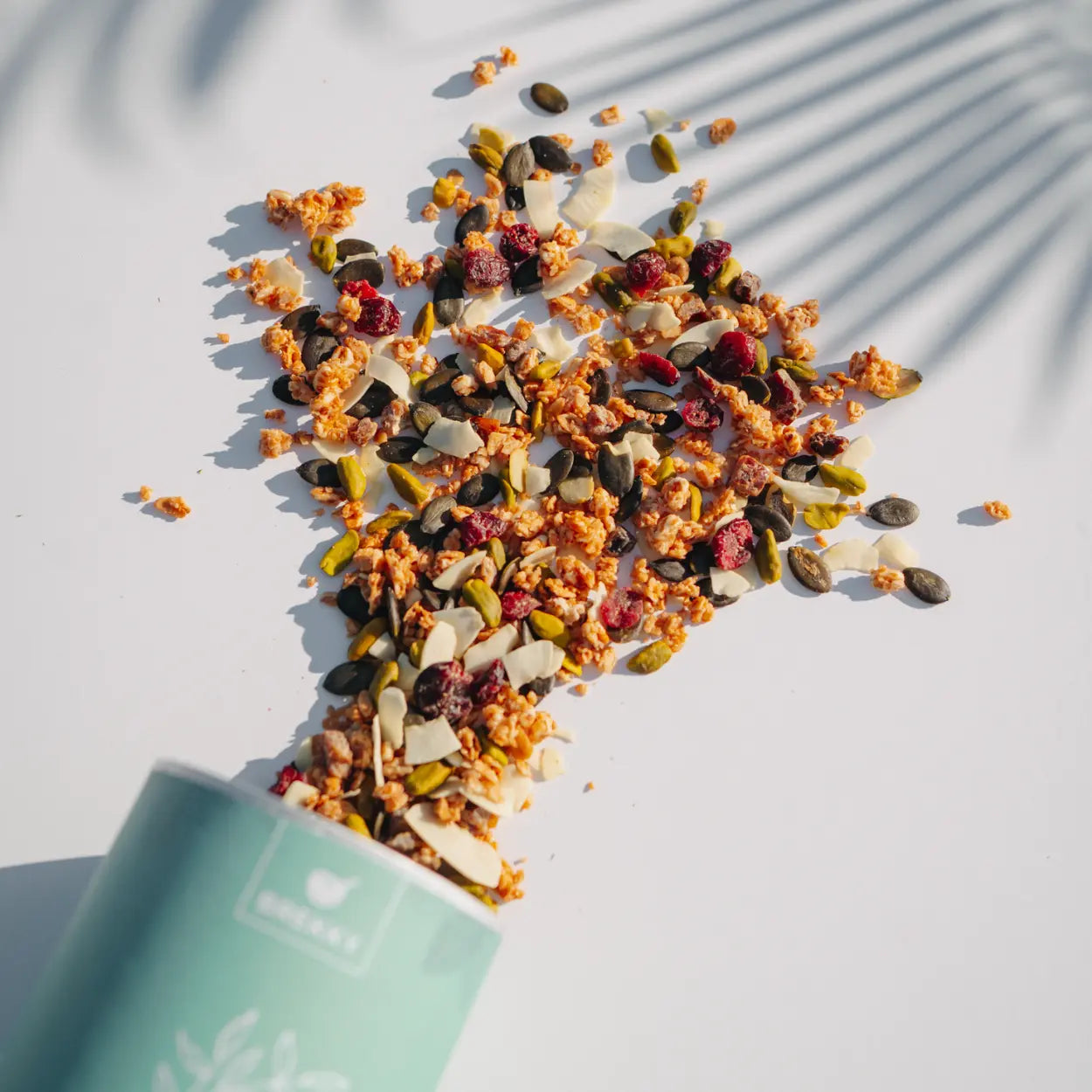
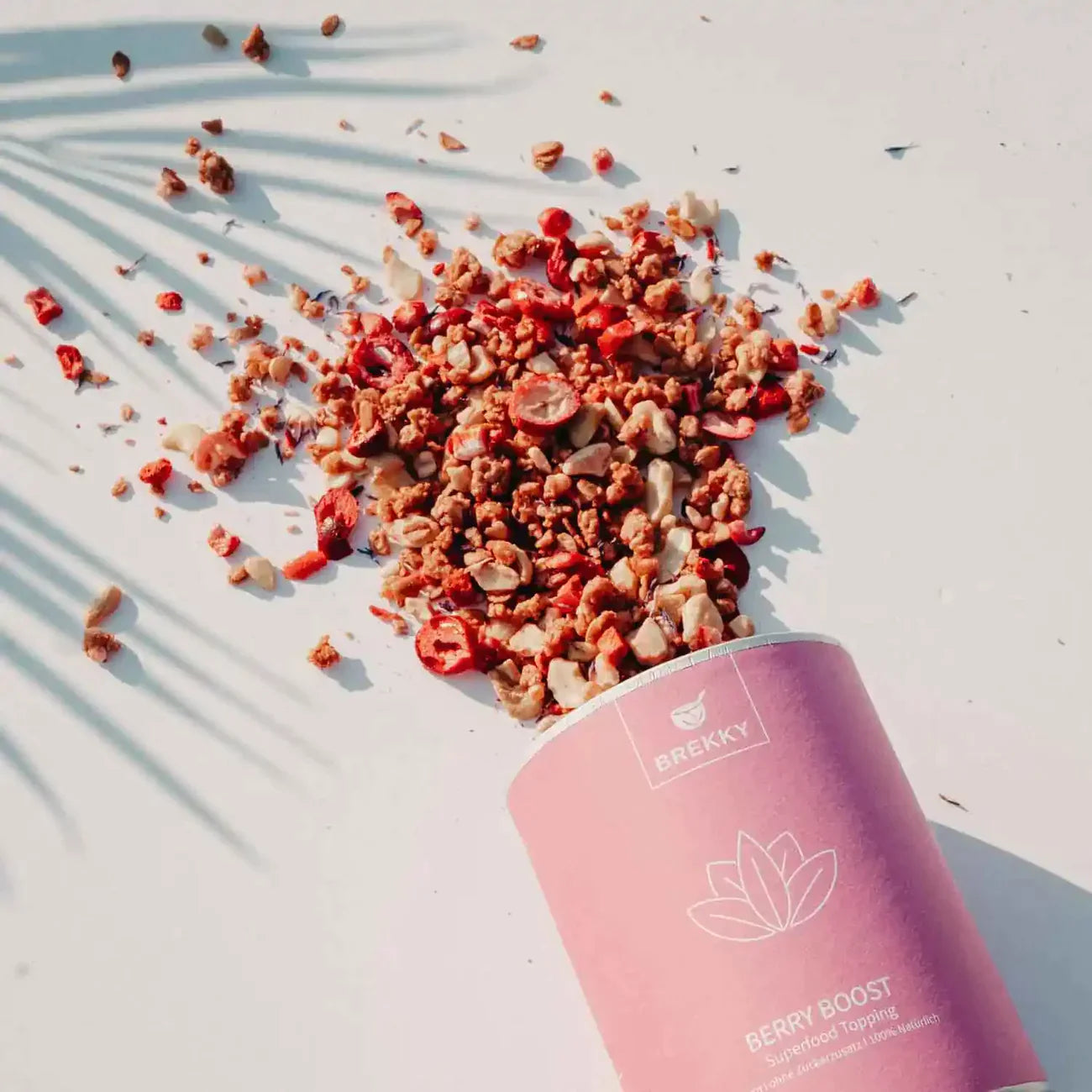
Low-carb breakfast for work & to go
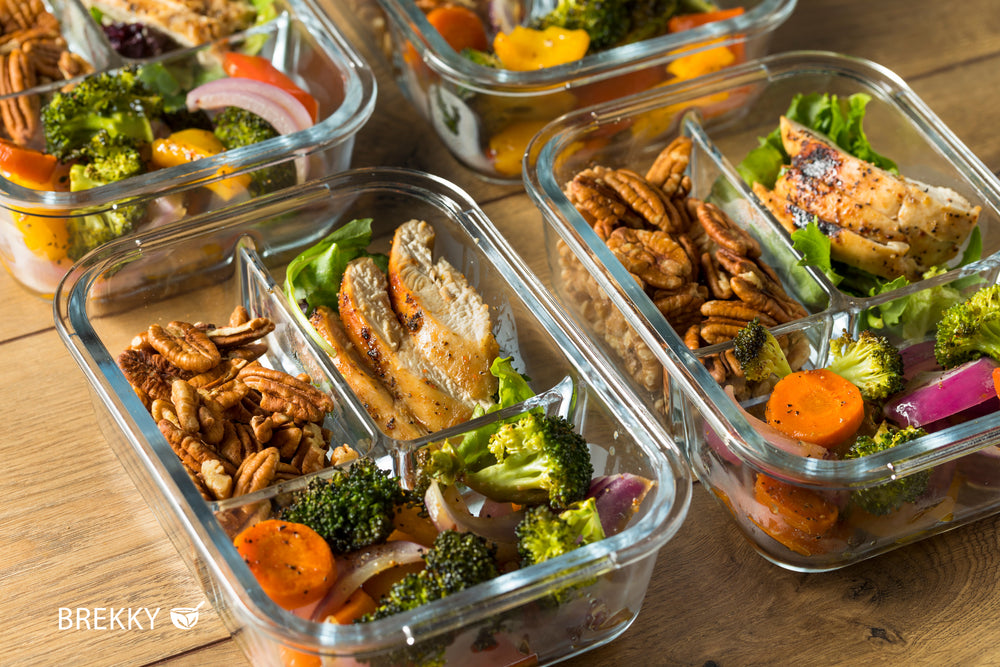
Practical tips to take with you
- Meal prep boxes :
Invest in high-quality, leak-proof containers. They'll keep all your ingredients neatly stored. From chopped vegetables to dips like quark, everything will be quickly at hand. - Layer principle :
Layering is especially recommended for salads or yogurt bowls. The dressing (e.g., herb curd) goes on the bottom, followed by vegetables or ingredients like eggs, chicken strips, or cheese, and then lamb's lettuce or arugula. This keeps the leaves crisp and prevents the mixture from getting soggy. - Small snacks instead of a big box :
Especially if you're often on the go and don't know when you'll have time to eat, mini portions are useful. For example, a hard-boiled egg, a few vegetable sticks, a handful of nuts, or even a few cheese cubes. These snacks can be enjoyed quickly between appointments.
Recipe ideas for work
- Egg muffins or scrambled eggs in a glass: Heat them briefly in the microwave – and you have a warm and filling low-carb breakfast.
- Quark or yogurt with berries: Simply layer in a box and sprinkle with seeds and nuts.
- Vegetable wrap: Instead of a wheat wrap, you can make an egg wrap. Whisk eggs and cook them in a pan as a thin omelet. This omelet acts as a wrap, which you can then fill with tomatoes, cucumbers, ham, cheese, or avocado.
- Low-carb bread with spread: If you're short on time, homemade or store-bought low-carb bread is ideal. Top it with turkey breast, cheese, cucumber slices, or herb curd, if desired.
Benefits of a low-carb breakfast for work
- No cravings for sweets : The higher protein and fat content means you stay full longer, have fewer cravings for sweets and don't need to buy chocolate bars on the go.
- Ability to concentrate : A stable blood sugar level can help you be more focused and productive because you don't experience constant energy drops.
- Customizable : You can choose exactly which ingredients you like and tolerate. This way, you're not dependent on the limited selection at the office or in bakeries.
A low-carb breakfast for work or to take with you generally requires only a little planning, but provides you with a large portion of health and enjoyment on the go.
Practical FAQs and nutritional tips



